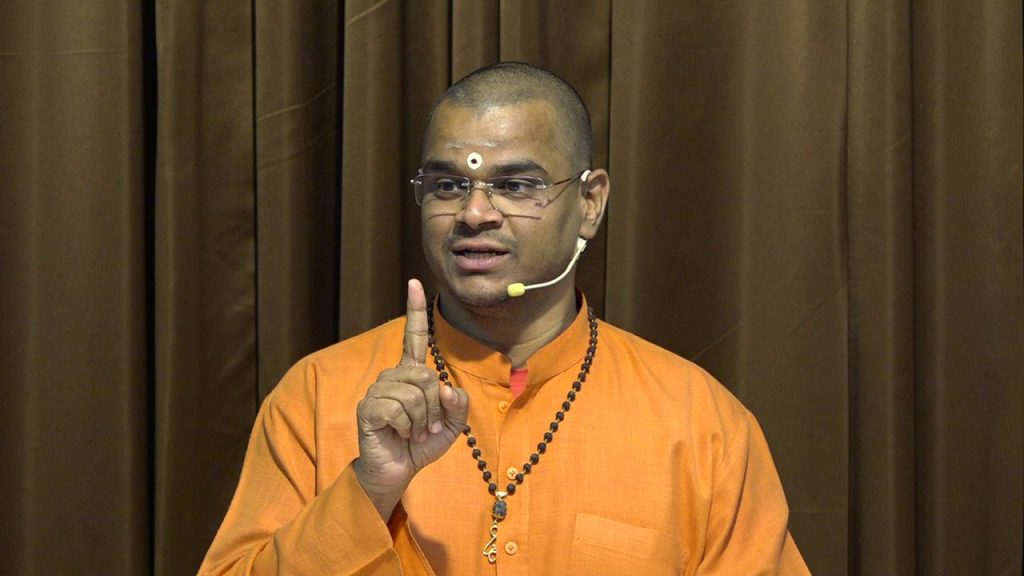Geeta Gyana Yagna: Master Your Moods
Date : 18 Jan 2025
From January 18-23, students of the Bhagavad Gita had the opportunity to revel in Bhagavan’s teachings at CCWU. Swami Avyayananda skillfully expounded on the subject, “Master Your Moods,” based on Chapter 14 of the Bhagavad Gita. After a brief recap of the earlier chapters, Swamiji posed the intriguing question: If this whole world of plurality is made up of a combination of, Purusha and Prakriti, how do we explain the multiplicity and dazzling variety of things and beings around us? If the cause is the same, why are there so many differences and varieties in creation? Why do each of us have such different minds and personalities? In the chapter under discussion, Bhagavan explains that this multiplicity, plurality, and diversity arise from the interplay of the three primary gunas – sattva, rajas, and tamas. Owing to the limitations of language, we often describe the gunas as being ‘born out of’ prakriti. However, Prakriti itself is identified as the three gunas. It is the combination of the three gunas that binds us. Shri Krishna beautifully states, “O mighty armed one, when these three gunas bind, no might will help.” These gunas function in every individual; they cannot be seen with the eyes, but we can come to recognize them through their expressions. In the words of Pujya Gurudev, “These three, in different proportions, come to influence the mental life and the intellectual calibre of every individual. It is these influences that provide the distinct flavour in each personality.” They govern our moods of the mind which often seem to rule over our life and ruin it. Therefore, it becomes essential – if we want to master our moods, we have to first know them.
Swamiji expounded in detail how each guna acts upon and binds the individual, as well as the interplay of the gunas. He clarified that all three are necessary to live life. We would not be able to know anything without sattva, do anything without rajas, and rest or sleep without tamas. However, if we are constantly swayed by them and enslaved by them, that is where the problem lies. He shared practical strategies for managing moods, emphasizing the importance of being aware of our internal climatic conditions akin to monitoring the dials in a vehicle while driving. The discourse also included a description of the Man of Realization, referred to as a Gunateeta, who transcends the three gunas. For such an individual there is no attachment to a particular state or aversion to another. He remains untouched by the fluctuations of the gunas. The chapter concluded with the answer to a very important question: how can we rise above the gunas? Bhagavan reveals that by single-pointed and unswerving devotion to Him, we can attain Him. If our minds are invested in the Lord who is beyond the three gunas, we too can go beyond the three gunas.
